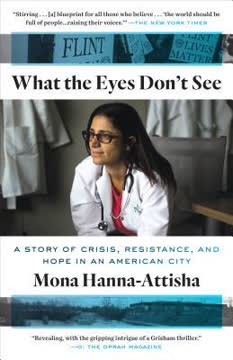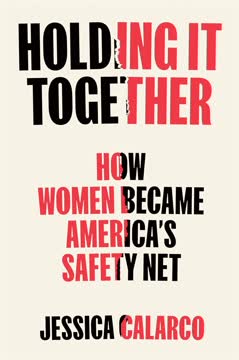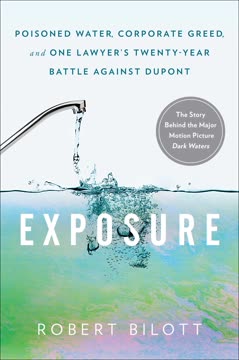Key Takeaways
1. Roots of a Fighter: Immigrant Legacy & Justice
Challenging injustice means standing up for the weak, the vulnerable, the abused, and the forgotten—be it in health, employment, education, or the environment.
Family's journey. Dr. Mona Hanna-Attisha's upbringing as an Iraqi immigrant in America deeply shaped her commitment to justice. Her parents, fleeing Saddam Hussein's oppressive regime, instilled in her and her brother a fierce belief in fighting for a better, fairer world, even when it meant personal risk. This foundation of activism and empathy became central to her professional life.
Early influences. A childhood car accident and a caring physician inspired her to become a pediatrician, while high school environmental activism solidified her passion for merging science with social change. She learned early that environmental disparities were not random, but often targeted vulnerable communities, a lesson reinforced by her studies in environmental health. These experiences cultivated a deep-seated drive to protect children and challenge systemic wrongs.
Unseen lessons. Her family's history of persecution, including stories of torture and disappearances in Iraq, taught her that leaders can be cruel and negligent. This awareness, coupled with her parents' resilience and unwavering moral compass, fueled her determination to never look away from suffering. These "unseen" lessons from her past became the bedrock of her future fight for the children of Flint.
2. Flint's Silent Poison: A Crisis Unveiled
This is the story of the most important and emblematic environmental and public health disaster of this young century.
A city's decline. Flint, once a symbol of American industrial might, suffered decades of deindustrialization, depopulation, and economic hardship. In 2011, Michigan Governor Rick Snyder appointed an unelected emergency manager (EM) to run the nearly bankrupt city, stripping its democratically elected officials of power and prioritizing extreme austerity measures. This set the stage for a catastrophic decision.
The water switch. In April 2014, to save money, the EM decided to switch Flint's water source from Detroit's pretreated Lake Huron supply to the corrosive Flint River. Despite immediate resident complaints about foul-smelling, discolored water and subsequent boil alerts, state officials repeatedly assured the public the water was safe. Dr. Mona, like many, initially believed these assurances.
The hidden threat. The critical mistake was failing to add corrosion control chemicals to the river water. This omission caused lead from the city's aging pipes to leach into the drinking water, creating a "silent epidemic" with no immediate visible signs. This invisible poison disproportionately affected the most vulnerable: children and pregnant women, whose developing brains are most susceptible to irreversible damage.
3. Unmasking the Truth: Data, Experts, and Leaks
If Miguel’s right that Flint is not using corrosion control, that means there’s lead in Flint’s water.
A friend's warning. Dr. Mona's high school friend, Elin Betanzo, an environmental engineer scarred by the D.C. water crisis, first alerted her to the potential lead contamination. Elin shared a leaked EPA memo from Miguel Del Toral, a federal regulator who suspected Flint was not using corrosion control and that lead levels were dangerously high due to faulty testing. This revelation shattered Dr. Mona's trust in government assurances.
Marc Edwards's findings. Simultaneously, Dr. Marc Edwards, a renowned corrosion expert who exposed the D.C. crisis, began his own "citizen testing" in Flint. His results confirmed Elin's fears, showing alarmingly high lead levels in residential tap water, with some samples exceeding 1,000 ppb—65 times the federal action level. Edwards's work provided crucial independent validation of the problem.
Initial clinic data. Driven by these warnings, Dr. Mona and her research coordinator, Jenny LaChance, quickly analyzed blood-lead levels from Hurley Children's Clinic patients. Their preliminary findings revealed a statistically significant increase in elevated blood-lead levels in children under five after the water switch, providing the first direct evidence of harm to Flint's children. This "game changer" was the missing piece from the D.C. crisis.
4. Official Obstruction: Denials, Attacks, and Cover-ups
The state’s single-minded mission to distract and deny had caused it to miss the fact that its own summary data—made public—confirmed my study rather than undermined it.
State's aggressive denial. Despite mounting evidence from experts and her own clinic data, Dr. Mona faced immediate and aggressive pushback from state agencies. Brad Wurfel, spokesperson for the Michigan Department of Environmental Quality (MDEQ), publicly dismissed her findings as "unfortunate" and "irresponsible," accusing her of "splicing and dicing" data. The Michigan Department of Health and Human Services (MDHHS) claimed her results were a "seasonal anomaly."
Ignoring red flags. Subsequent investigations revealed a pattern of deliberate obfuscation. State officials, while telling Flint residents their water was safe, arranged for bottled water in their own offices. They manipulated water samples to minimize lead detection and dismissed Miguel Del Toral's warnings, even reprimanding him. This systematic cover-up prioritized political expediency and cost-saving over public health.
Blaming the victims. Officials attempted to shift blame to residents' home plumbing or their failure to flush water, echoing tactics used by the lead industry decades prior. This disregard for the community, particularly its poor and predominantly Black population, highlighted a profound failure of governmental responsibility and a deep-seated indifference to the well-being of Flint's citizens.
5. Environmental Injustice: A Community Betrayed
This is a racial crime. If it were happening in another country, we’d call it an ethnic cleansing.
Disproportionate impact. The Flint water crisis was a stark example of environmental injustice, where a predominantly Black, low-income community bore the brunt of environmental and public health burdens. Dr. Mona's mentor, Bunyan Bryant, a pioneer of the environmental justice movement, had long highlighted how racial minorities and low-income communities are often targeted for industrial pollution and neglect.
Systemic racism. The crisis was exacerbated by the undemocratic emergency manager law, which effectively disenfranchised Flint's citizens. Critics argued that this law disproportionately affected African-American communities in Michigan, leading to decisions that would never have been tolerated in affluent, predominantly white cities. The lack of accountability and the dismissive response from state officials underscored a systemic disregard for Black lives.
Historical context. Flint's history of racial segregation in housing and employment, coupled with the abandonment by General Motors, created a vulnerable population. The water crisis became another chapter in a long narrative of betrayal, where the city's residents, particularly its children, were treated as disposable. This pattern of "wrong complexion for protection" resonated deeply with the Black Lives Matter movement.
6. Forging a Coalition: Power in Unity
We were, as he said, “a dream team.”
Building a diverse team. Recognizing the immense challenge, Dr. Mona quickly assembled a diverse coalition of allies. This "dream team" included her high school friend Elin Betanzo, the tenacious water expert Marc Edwards, local leaders like Dr. Lawrence Reynolds and Kirk Smith, and political figures such as Senator Jim Ananich and Congressman Dan Kildee. Each brought unique expertise and influence to the fight.
Strategic collaboration. The team leveraged their varied backgrounds—from public health and environmental engineering to political strategy and community organizing—to tackle the crisis from multiple angles. They shared information, coordinated actions, and strategized on how to counter state denials and push for official recognition and aid. This collective effort amplified their individual voices and impact.
Unlikely alliances. Dr. Mona even found common ground with Marc Edwards, a self-proclaimed conservative Republican, despite their ideological differences. Their shared commitment to scientific integrity and protecting children transcended political divides, demonstrating that the fight for justice could unite unexpected allies. This broad coalition proved essential in challenging entrenched governmental resistance.
7. The Public Reckoning: A Baby Bottle's Impact
This is what our babies are drinking, for their first year of life. Lead-tainted water during the period of most critical brain development.
The press conference. On September 24, 2015, Dr. Mona held a press conference at Hurley Medical Center, publicly presenting her irrefutable data on elevated blood-lead levels in Flint children. Surrounded by a coalition of supporters, she delivered a powerful, science-backed presentation, emphasizing the irreversible harm of lead exposure on developing brains.
A compelling visual. To underscore the urgency, Dr. Mona held up a baby bottle filled with Flint tap water, a simple yet devastating visual that resonated deeply with the media and public. This act, combined with her clear articulation of the crisis, transformed the narrative from abstract complaints to a tangible threat to children's lives. The image became iconic, symbolizing the betrayal of trust.
Forcing a response. The press conference, widely covered by local and national media, created immense public pressure. Despite initial attempts by state officials to discredit her, the undeniable evidence and public outcry forced a turning point. The state's denials became unsustainable, paving the way for official acknowledgment and the eventual decision to switch Flint's water source back to Detroit.
8. Enduring the Backlash: Science vs. Spin
You don’t necessarily hear this part of the story often, but when you’re in the middle of a backlash, the psychological stress is extraordinary.
Personal toll. The immediate aftermath of the press conference brought intense psychological stress. Dr. Mona faced personal attacks, accusations of "splicing and dicing" data, and doubts about her scientific credibility. This backlash, coupled with relentless work and lack of sleep, pushed her to the brink of despair, making her question her own judgment.
Scientific counter-attack. To counter the state's misinformation, Dr. Mona and her team refined their research, using advanced geospatial software to pinpoint affected neighborhoods. Their updated study, published in The American Journal of Public Health, provided unassailable scientific proof, making it much harder for officials to dismiss their findings. The Detroit Free Press also exposed the state's flawed data, further validating Dr. Mona's work.
Persistence pays off. Despite the emotional toll and the state's continued attempts to downplay the crisis, Dr. Mona and her allies persisted. Their unwavering commitment to the truth, combined with relentless media engagement and political pressure, slowly eroded the state's resistance. This period highlighted the immense courage required to challenge powerful institutions and the importance of scientific integrity in the face of political spin.
9. Beyond Lead: A Holistic Path to Healing
The most important medication that I can prescribe is hope.
Long-term interventions. Recognizing that switching the water source was only the first step, Dr. Mona and her team developed a comprehensive list of science-based demands for Flint's children. This "prescription for hope" focused on mitigating the long-term effects of lead exposure and toxic stress through holistic interventions, emphasizing that resilience could be learned and fostered.
Key areas of support:
- Nutrition: Enhanced meals, fruit/vegetable prescriptions, WIC enrollment to combat lead absorption.
- Medical Homes: Regular pediatric care, developmental screenings, and coordination with other services.
- Early Education & Family Support: Home visiting, early literacy, parenting support, preschools, and quality childcare.
- Mental Health: Trauma crisis lines, mindfulness workshops, and expanded behavioral health access.
The Flint Child Health and Development Fund. To ensure sustained support, Dr. Mona helped establish the Flint Child Health and Development Fund (FlintKids.org), a "tomorrow fund" aimed at raising $100 million. This fund, along with federal and state aid, aimed to provide long-term resources, including a registry for all exposed individuals, to track and support the health and development of Flint's children for decades to come.
10. Accountability and Hope: Rebuilding Trust
Admitting your mistakes, and then doing what you can to rectify them, takes integrity and strength.
State's capitulation. Faced with overwhelming evidence, public outrage, and federal intervention, Governor Snyder's administration eventually conceded the crisis. The water was switched back to Detroit, and a significant state budget of over $200 million was allocated for Flint's recovery. This marked a crucial victory, demonstrating that persistent advocacy could force accountability from even the most resistant government.
Criminal charges and lessons learned. The crisis led to numerous criminal charges against state and city officials, including involuntary manslaughter for some, highlighting the severe consequences of negligence and cover-ups. The Flint water crisis became a stark lesson in the dangers of extreme austerity, the erosion of democratic oversight, and the devastating impact of environmental injustice.
A new path forward. Despite the immense suffering, the crisis also fostered a powerful sense of community resilience and hope. The collaborative efforts of activists, scientists, medical professionals, and politicians created a model for addressing systemic failures and rebuilding trust. Dr. Mona's unwavering commitment to Flint's children, even in the face of adversity, transformed a tragedy into an opportunity for lasting change and a blueprint for other vulnerable communities.
Last updated:
Review Summary
What the Eyes Don't See is a compelling account of the Flint water crisis by pediatrician Dr. Mona Hanna-Attisha. Readers praise her engaging writing style, passion for justice, and ability to explain complex scientific concepts. The book interweaves the crisis with her family's immigrant story, which some found distracting while others appreciated. Many reviewers were moved by her dedication to exposing the truth and fighting for Flint's children. Overall, it's seen as an important, inspiring read that sheds light on environmental injustice and government negligence.
Similar Books
Download PDF
Download EPUB
.epub digital book format is ideal for reading ebooks on phones, tablets, and e-readers.









